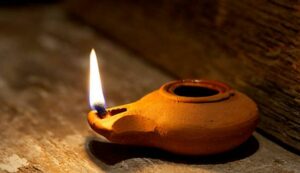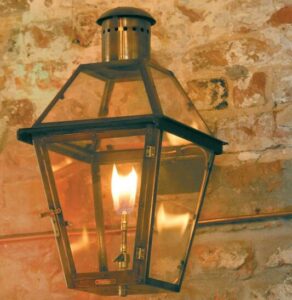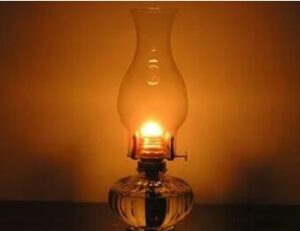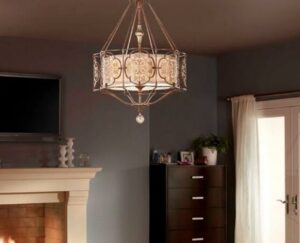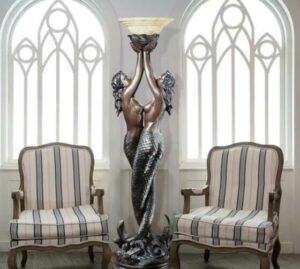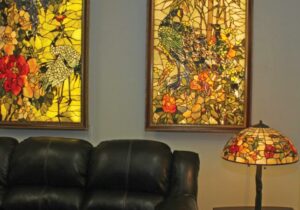Antique lamps are not just functional lighting fixtures; they are also windows into the past, reflecting the artistry, culture, and technological advancements of bygone eras. The history of antique lamps is a fascinating journey that spans centuries and civilizations, from the earliest oil lamps of ancient Mesopotamia to the ornate gas and electric lamps of the Victorian era.
Each period has contributed unique designs, materials, and innovations that have shaped the evolution of lamp-making and left indelible marks on the world of decorative lighting.
In this article, we will delve into the captivating history behind antique lamps, exploring their origins, the various styles that emerged over time, and the key factors that influenced their development.
As we journey through time, you will gain a deeper appreciation for the beauty, craftsmanship, and historical significance of these treasured lighting fixtures, and perhaps even find inspiration for your own collection of antique lamps.
Ancient Lamps
The history of antique lamps dates back to ancient times when lamps were made from various materials such as clay, stone, and metal. These lamps were typically fueled by animal fat, oil, or beeswax and consisted of a wick that was lit and held in place by a fixed mouthpiece. The use of these lamps was primarily for functional lighting in homes and streets.
As time passed, ancient lamps evolved into various shapes and sizes, some even had ornate designs or were made of precious materials such as bronze and gold.
Medieval and Renaissance Lamps
During the medieval and Renaissance periods, lamps evolved to become more functional in castles and palaces. Larger lamps with longer burn times were developed to provide light during the long winter months, and these lamps were typically fueled by oil. Several innovative designs were created during this period, such as suspended lamps, chandeliers, and candelabras.
The Italian Renaissance saw the rise of lamps that were designed solely for decorative purposes, rather than just functional lighting. These lamps were made with a variety of precious materials, and their designs reflected the tastes and interests of the wealthy patrons who commissioned them.
The Rise of Gas Lamps
In the 19th century, gas lamps were invented, which revolutionized the way in which lighting was provided in homes and streets across the world. These lamps were fueled by coal gas, and their use quickly spread as gas distribution systems were put in place. Gas lamps were popular in the late 19th century and could be found in streets, parks, and even homes.
An example of a gas lamp from this time period is the gasolier, which was a large lamp that was attached to the ceiling and provided chandelier-like lighting.
Kerosene and Oil Lamps
At the same time, kerosene and oil lamps were also gaining popularity. These lamps had longer burn times than gas lamps and were much safer to use, as they didn’t produce toxic fumes. The invention of the mantle lamp in the late 19th century revolutionized the use of kerosene lamps. The mantle lamp produced a brighter light and was more efficient – it used less fuel than other types of lamps.
Electric Lamps
The invention of the electric lamp in the late 19th century was a significant turning point in the history of antique lamps. Electric lamps used a filament that was heated by an electric current, producing a bright light. Electric lamps revolutionized the lighting industry, and within a few decades, they had become the primary source of lighting in homes and businesses across the world.
As time progressed, electric lamp designs became more specialized. One example of this is the Art Nouveau lamp, which was designed to look like flowers. These lamps were popular in the early 20th century and are highly sought after by collectors today.
Styles of Antique Lamps
Antique lamps come in a variety of styles, each with its unique designs and cultural influences. Some of the popular antique lamp styles are Art Deco, Victorian, and Art Nouveau.
Victorian lamps were characterized by their ornate and intricate designs, heavy use of patterns, and use of crystal and brass. Some Victorian lamps also had shades made of lace or other materials.
Art Deco lamps were popular in the 1920s and 1930s and are characterized by their geometric shapes and bold colors, often made from chrome or glass.
Art Nouveau lamps were prominent in the late 19th and early 20th centuries and had flowing and organic designs inspired by nature. These lamps had shades made of stained glass or other materials, and the bases were often made of bronze or brass.
Famous Antique Lamps
There are many famous antique lamps that have gained national and international recognition.
One example is the Tiffany lamp, which was designed by Louis Comfort Tiffany in the early 1900s and is highly sought after by collectors today. These lamps are characterized by their stained glass shades and intricate designs inspired by nature.
Another famous antique lamp is the Aladdin lamp, which was invented in 1908 and became popular during the oil and kerosene lamp era. The Aladdin lamp had a unique design that allowed it to burn brighter and cleaner than other kerosene lamps of the time. It also had a unique wick that didn’t need trimming, making it a popular choice for homes and businesses alike.
Antique Lamp Collecting
Antique lamp collecting has become a favorite pastime for many people around the world. Collectors are drawn to antique lamps for their historical significance, beauty, and the stories they hold. However, collecting antique lamps requires knowledge and expertise to identify rare and valuable lamps.
When collecting antique lamps, it’s important to purchase from reputable dealers and get authentication paperwork for any purchases. It’s also important to maintain the lamps in good condition to preserve their value, and to display them properly to showcase their unique designs.
Value and Rarity
Factors that influence the value of antique lamps include rarity, age, condition, and designer. Some antique lamps, such as those created by Louis Comfort Tiffany, can fetch hundreds of thousands of dollars at auctions. Rarity is also a significant factor in determining the value of an antique lamp. The more unique and rare a lamp is, the higher its value.
FAQs
– Can you still use antique lamps for functional lighting?
Yes, antique lamps can still function as lighting sources if they are in good working condition and are used safely.
– Are antique lamps a good investment?
Antique lamps can be a good investment if you purchase rare, authentic, and well-maintained lamps.
– How do I identify the style of an antique lamp?
You can identify the style of an antique lamp by looking at its design, materials, and age. Do research on different antique lamp styles to identify the one you have.
– What are some tips for displaying antique lamps in my home?
When displaying antique lamps in your home, consider their height, placement, and lighting. Ensure that lamps are not in direct sunlight, and use soft lightbulbs to showcase the lamp’s design.
Conclusion
In conclusion, antique lamps have a rich and fascinating history that has evolved over centuries to what we know today. The variety of lamp styles available makes them a popular choice for collectors and homeowners alike.
Collecting and preserving antique lamps requires expertise and knowledge, but it’s a pastime that can provide beauty, history, and even investment opportunities.

